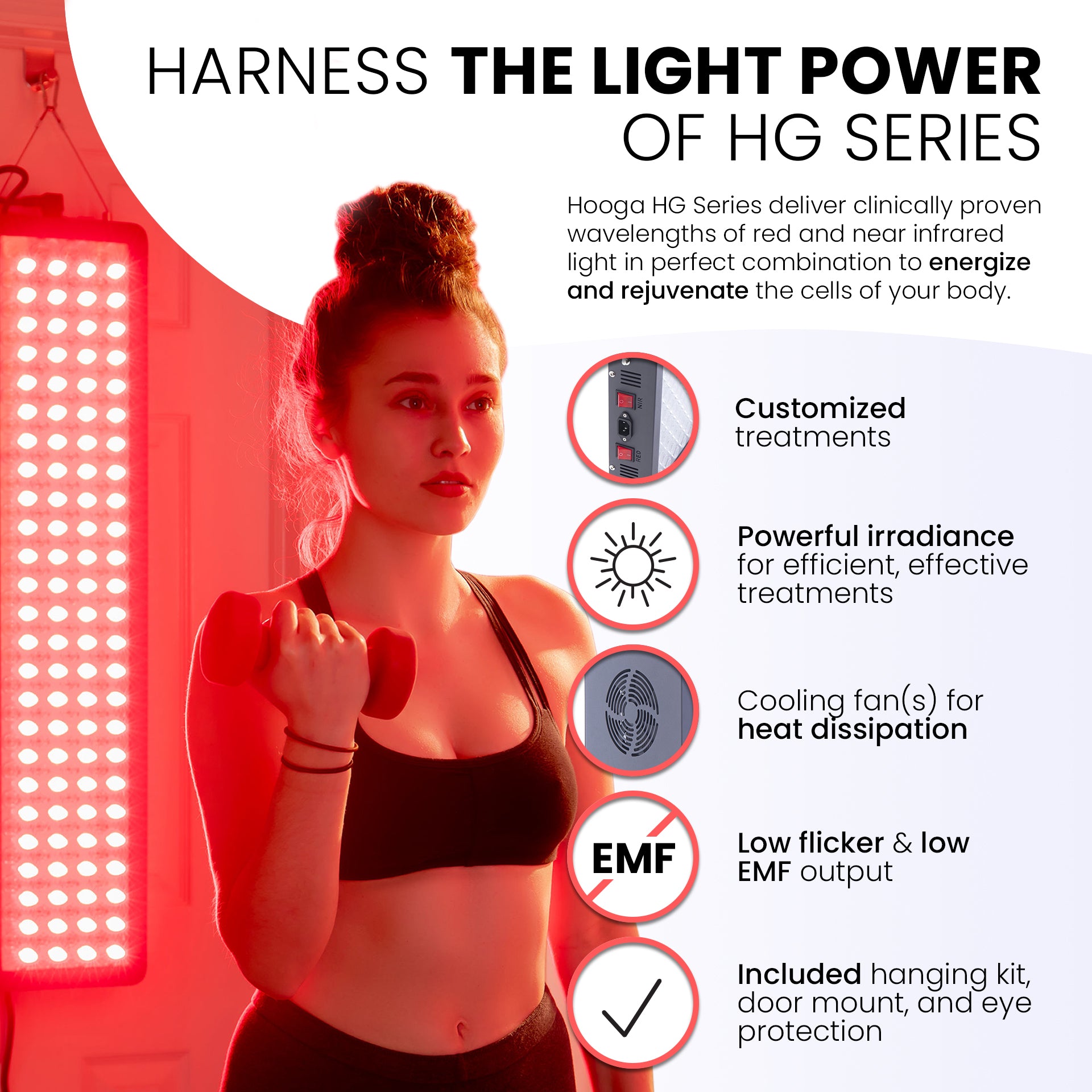Spearheading the Future of Health: A Closer Consider Photobiomodulation
Wiki Article
Unlocking the Prospective of Photobiomodulation: A Promising Approach for Restorative Treatment
Are you curious regarding the possibility of photobiomodulation for therapeutic intervention? Imagine a scenario where a person dealing with chronic pain locates relief via a non-invasive therapy that uses light. This is precisely what photobiomodulation offers. It is a promising strategy that takes advantage of the power of light to promote recovery and minimize inflammation in numerous medical conditions. By targeting specific mobile processes, photobiomodulation has actually shown potential in increasing wound healing, lowering pain, and promoting tissue regeneration. In this introduction, we will explore the mechanisms of action, applications in medication, and the present proof supporting the effectiveness of photobiomodulation. Additionally, we will certainly talk about future directions and prospective challenges in opening its full possibility as a healing treatment.Recognizing Photobiomodulation
To comprehend photobiomodulation, you require to comprehend the concept of how light therapy can directly affect mobile procedures in your body. Photobiomodulation, also recognized as low-level light therapy, is a non-invasive treatment that makes use of details wavelengths of light to promote biochemical responses in your cells.The therapeutic impacts of photobiomodulation are far-reaching and have been studied extensively in different clinical fields. It has actually shown promising results in advertising cells fixing and regeneration, lowering inflammation, easing pain, and enhancing injury recovery. Photobiomodulation has actually been located to have a favorable impact on neurological conditions, such as stressful mind injury and stroke, by stimulating neural task and promoting neuroplasticity.
Unlike other therapies, photobiomodulation does not create or generate any kind of warmth tissue damages. It is important to keep in mind that photobiomodulation needs to be carried out by trained professionals or according to the supplier's directions to make certain ideal results and safety and security.

Devices of Activity
In recognizing the devices of activity, you will certainly find how photobiomodulation directly affects mobile processes via certain biochemical reactions. When light is put on the body, it is soaked up by chromophores, such as cytochrome c oxidase and flavins, which are present in the mitochondria. This absorption brings about a waterfall of events that eventually cause mobile adjustments.Photobiomodulation boosts the task of cytochrome c oxidase, an essential enzyme in the mitochondria that is entailed in the electron transportation chain. As an outcome, cellular metabolic process is boosted, advertising tissue fixing and regrowth.
Furthermore, photobiomodulation has been shown to regulate mobile signaling paths. It turns on various development variables and signaling particles, such as nitric oxide and responsive oxygen species, which play vital roles in procedures like angiogenesis, cell, and inflammation expansion. These signaling pathways contribute to the therapeutic effects of photobiomodulation, advertising tissue healing and reducing discomfort and inflammation.
Applications in Medication
Discover the extensive applications of photobiomodulation in medicine. Photobiomodulation, likewise called low-level light treatment, is a non-invasive treatment that makes use of light to promote and boost cellular processes recovery. In medicine, this method has actually revealed encouraging results throughout numerous areas.One of the main applications of photobiomodulation is in discomfort management. photobiomodulation laser. It has been used to alleviate both persistent and severe pain, including musculoskeletal conditions, neuropathic discomfort, and post-operative discomfort. By targeting the afflicted location with particular wavelengths of light, photobiomodulation can lower inflammation, advertise cells repair, and give relief
In addition, photobiomodulation has shown possible in injury recovery. It can speed up the recovery procedure by improving cell expansion, advertising angiogenesis, and decreasing scar cells formation. This has considerable effects in the therapy of chronic wounds, such as diabetic person abscess and pressure sores.
In dermatology, photobiomodulation has been made use of for its anti-inflammatory and regenerative impacts. It can boost the look of marks, lower acne lesions, and stimulate hair development in conditions like androgenetic alopecia.
Moreover, photobiomodulation has actually revealed guarantee in neurorehabilitation. It can improve cognitive function, enhance motor recuperation, and help in the treatment of neurodegenerative conditions like Alzheimer's and Parkinson's.
Clinical Evidence and Research Study Searchings For

In the area of bone and joint disorders, photobiomodulation has actually been located to decrease pain and inflammation, enhance variety of activity, and increase tissue repair service. Researches have actually shown its efficiency in dealing with conditions such as osteo arthritis, tendinopathies, and muscle pressures. Furthermore, photobiomodulation has shown favorable results on injury recovery by advertising collagen fibroblast, synthesis, and angiogenesis proliferation. This makes it a beneficial tool in the management of chronic wounds, diabetic person abscess, and medical incisions.
Moreover, study has actually shown that photobiomodulation can have neuroregenerative and neuroprotective effects. It has been discovered to enhance cognitive function, reduce neuroinflammation, and boost neuronal survival and synaptic plasticity. This has essential implications for the therapy of neurological problems such as Alzheimer's illness, Parkinson's illness, and stroke.
Future Directions and Possible Challenges
Progressing, it is very important to take into consideration the future directions discover here and potential difficulties bordering the use of photobiomodulation as a healing intervention. One key future direction is the expedition and optimization of dosing specifications. Currently, there is no consensus on the optimum wavelength, strength, duration, and regularity of photobiomodulation therapy. Further study is required to recognize the dose-response connection and develop evidence-based standards for clinical practice.One more essential Learn More Here future direction is the growth of portable and cost-effective photobiomodulation tools. While existing devices are efficient, they are often cumbersome, costly, and call for specialist guidance - photobiomodulation. The development of easy to use and cost effective gadgets would significantly improve access to this treatment, allowing even more people to gain from its prospective healing results
In addition, future study must concentrate on clarifying the systems underlying photobiomodulation. In spite of its growing popularity, the exact devices whereby photobiomodulation exerts its healing impacts are not totally understood. Recognizing these devices would certainly not only boost our expertise of the treatment however also aid in the development of even more targeted and reliable treatments.
Nevertheless, there are additionally potential challenges that require to be attended to. pbm light therapy. These consist of the requirement for standardized methods, the requirement for properly designed clinical trials with larger example dimensions, and the need for lasting follow-up research studies. Regulatory and safety considerations need to be taken into account to guarantee the secure and effective usage of photobiomodulation in clinical practice.
Verdict
In conclusion, photobiomodulation holds fantastic pledge as a healing intervention in medicine. With continuous researches and advancements in this area, photobiomodulation has the prospective to unlock brand-new opportunities for enhancing client results.Are you curious about the potential of photobiomodulation for therapeutic intervention? By targeting specific check these guys out mobile processes, photobiomodulation has revealed potential in accelerating injury healing, minimizing pain, and advertising cells regrowth.Additionally, photobiomodulation has shown prospective in injury healing.Relocating forward, it is vital to consider the potential obstacles and future directions bordering the use of photobiomodulation as a therapeutic treatment. With recurring researches and innovations in this area, photobiomodulation has the possible to open brand-new opportunities for boosting individual outcomes.
Report this wiki page